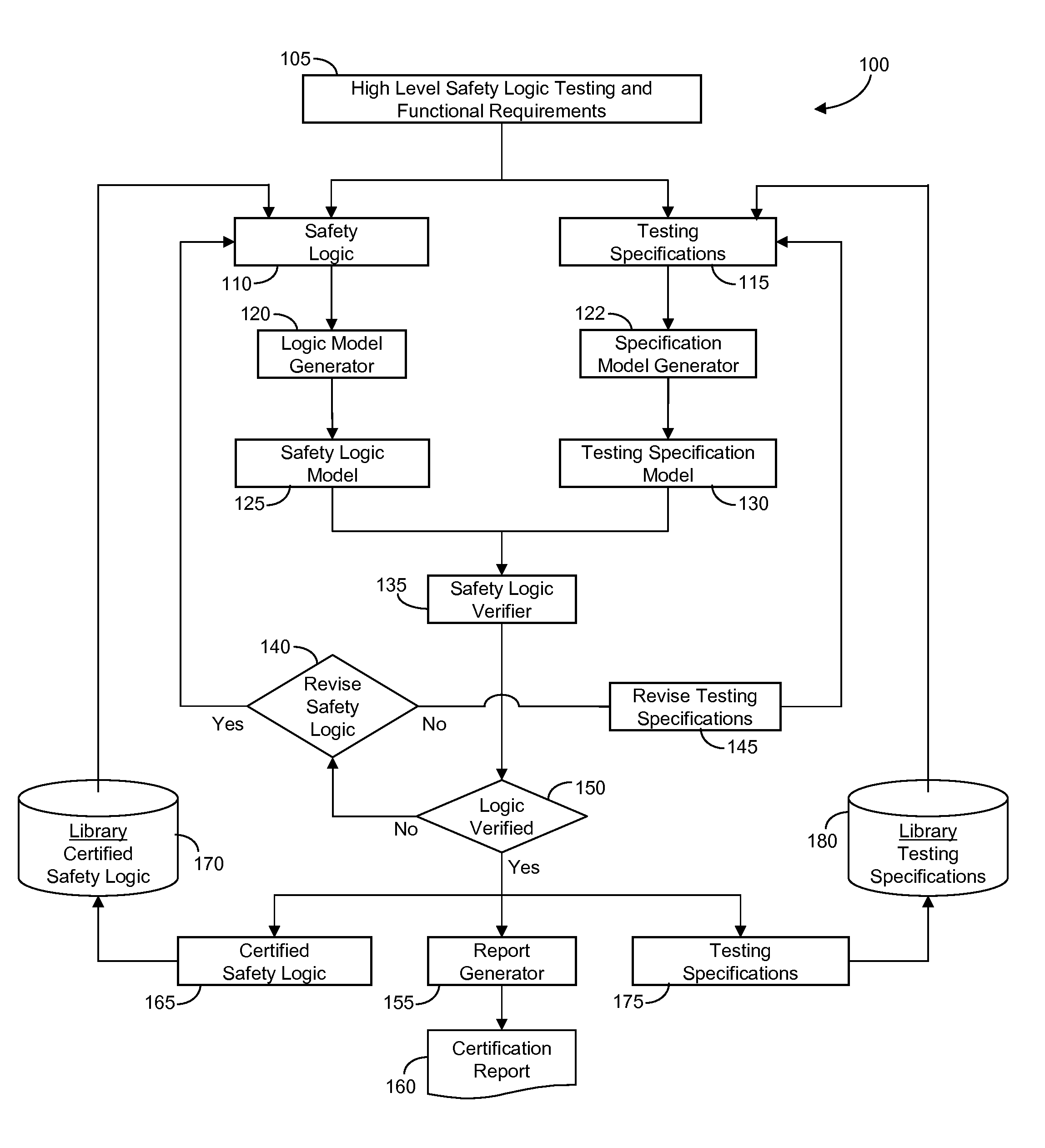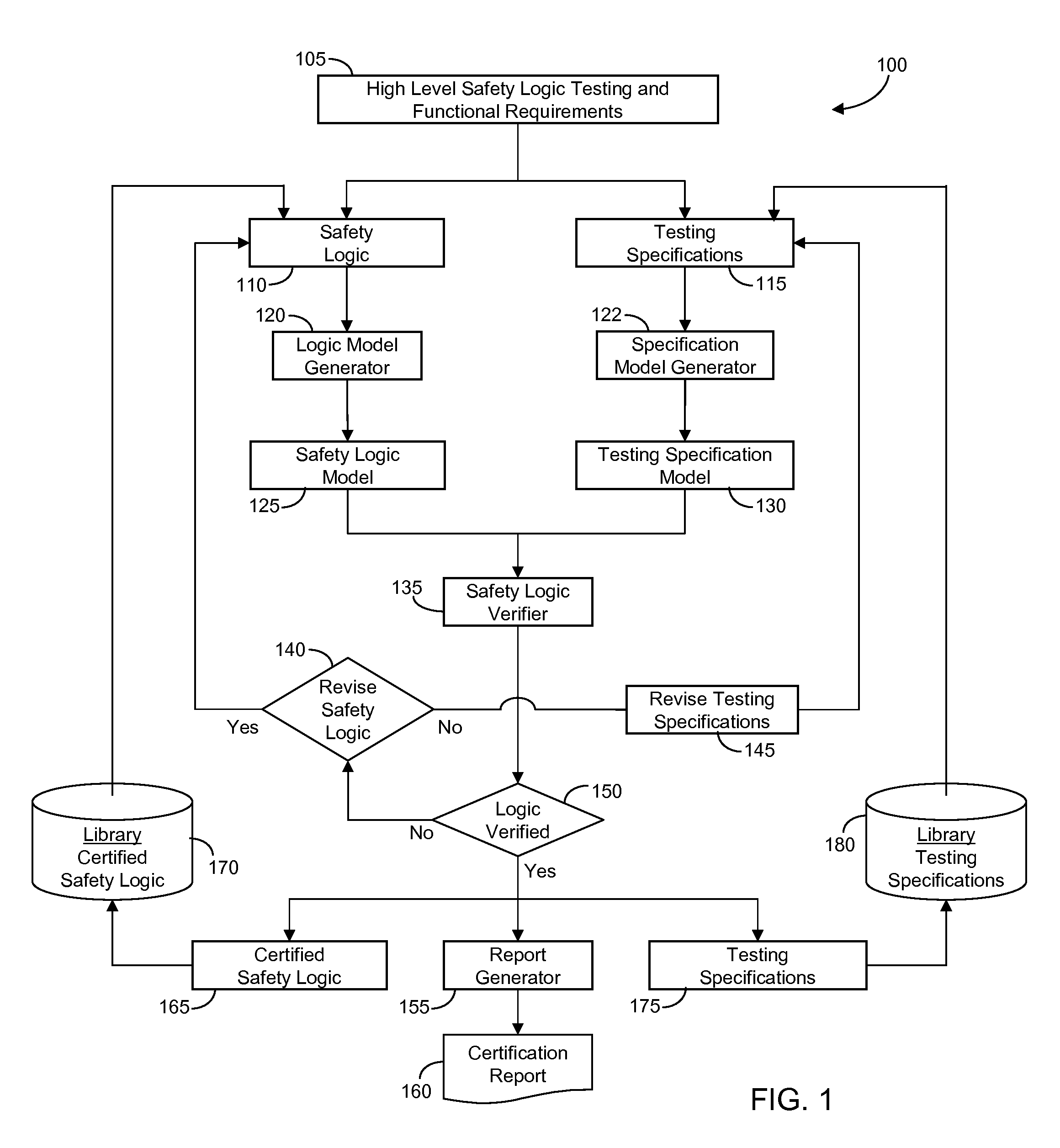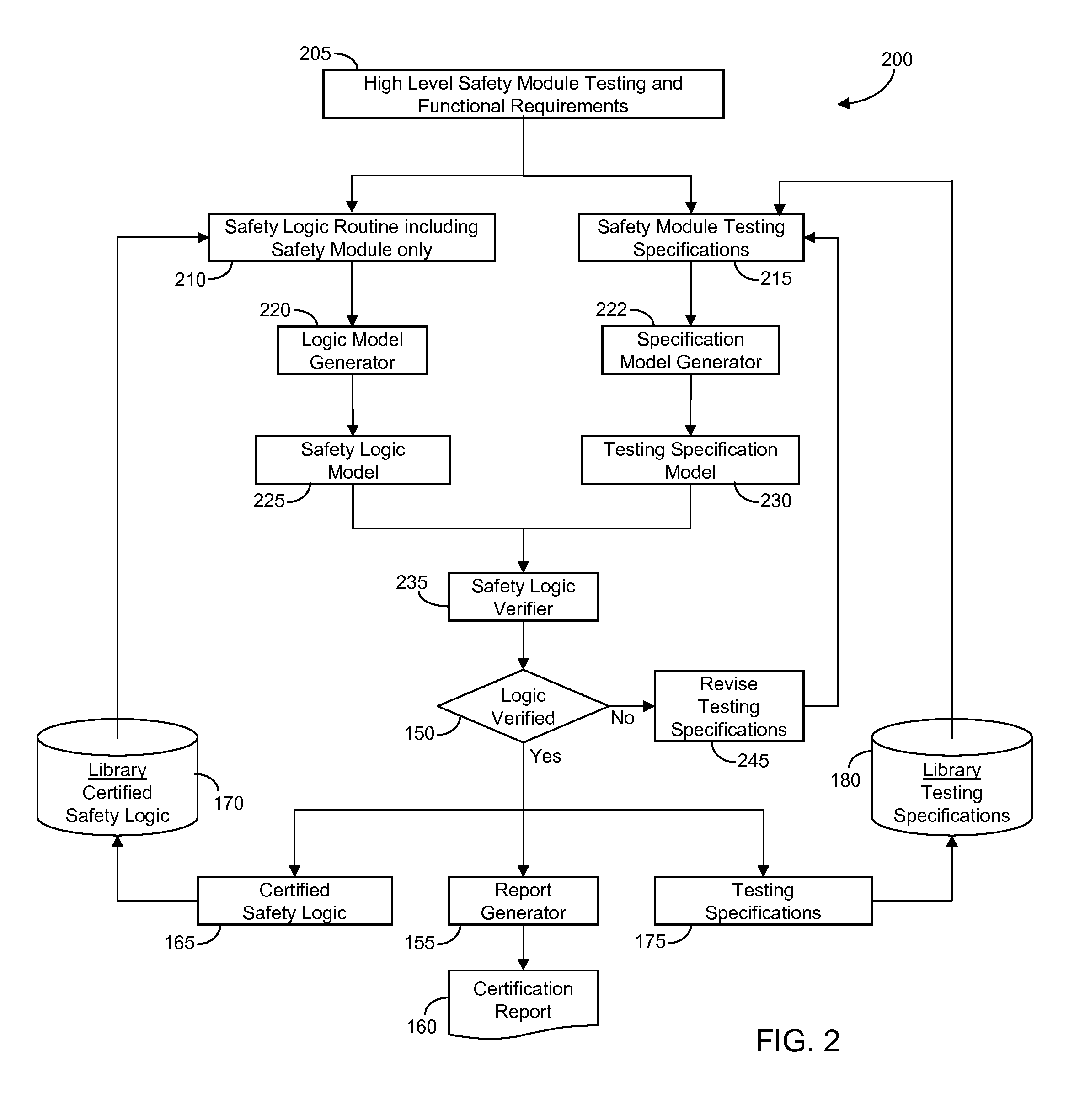Method and system for formal safety verification of manufacturing automation systems
a technology for automation systems and safety verification, applied in the field of automation logic testing, can solve the problems of limited hardware-based verification testing, logic testing dependent on physical inputs and manual triggers may not be repeatable, and the entire state space of safety logic is not fully evaluated or verified. , to achieve the effect of improving verification confidence, reducing verification costs, and reducing development tim
- Summary
- Abstract
- Description
- Claims
- Application Information
AI Technical Summary
Benefits of technology
Problems solved by technology
Method used
Image
Examples
Embodiment Construction
[0024]Referring to the drawings, and beginning with FIG. 1, generally indicated at 100 is a preferred embodiment of a system for the formal verification and certification of safety logic 110. Safety logic 110 is of the type typically used for control logic of safety-related systems in manufacturing cells, for example, in the logic of programmable logic controllers (PLC). The safety logic 110 may be stored in or provided through a controller, e.g., programmable logic controller (PLC) or accessible thereby, including the safety logic 110 as described below with reference to FIGS. 1-3. Safety logic 110 can be stored in ROM and automatically executed by a controller to provide the required functionality. The controller, e.g., PLC, may be configured as a digital computer having a microprocessor or central processing unit, read only memory (ROM), random access memory (RAM), electrically-erasable programmable read only memory (EEPROM), high speed clock, analog to digital (A / D) and digital ...
PUM
 Login to View More
Login to View More Abstract
Description
Claims
Application Information
 Login to View More
Login to View More - R&D
- Intellectual Property
- Life Sciences
- Materials
- Tech Scout
- Unparalleled Data Quality
- Higher Quality Content
- 60% Fewer Hallucinations
Browse by: Latest US Patents, China's latest patents, Technical Efficacy Thesaurus, Application Domain, Technology Topic, Popular Technical Reports.
© 2025 PatSnap. All rights reserved.Legal|Privacy policy|Modern Slavery Act Transparency Statement|Sitemap|About US| Contact US: help@patsnap.com



